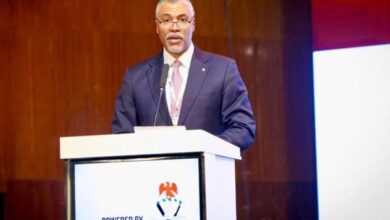Dangote Powers Cement Plant in Tanzania with Gas Turbines
 The management of Dangote Cement has made known that its cement plant in East African country, Tanzania now runs on gas turbines, just as it announced that its Pan African sales increased by 2.7% to nearly 4.7 million tons for the 6-month ended Sunday, June 30, 2019.
The management of Dangote Cement has made known that its cement plant in East African country, Tanzania now runs on gas turbines, just as it announced that its Pan African sales increased by 2.7% to nearly 4.7 million tons for the 6-month ended Sunday, June 30, 2019.
The gas turbine is the engine at the heart of the power plant that produces an electric current. It is a combustion engine that can convert natural gas or other liquid fuels to mechanical energy. This energy then drives a generator that produces electrical energy. It is electrical energy that moves along power lines to homes and businesses.
To generate electricity, the gas turbine heats a mixture of air and fuel at very high temperatures, causing the turbine blades to spin. The spinning turbine drives a generator that converts the energy into electricity.
The gas turbine can be used in combination with a steam turbine — in a combined-cycle power plant — to create power extremely efficiently.
Other manufacturing firms may consider following Dangote Cement’s path, as the usage of gas turbines is gaining popularity.
Findings have shown that lower operational cost is one of the primary reasons why gas turbines have gained so much popularity. When compared with other low-carbon emission alternatives like nuclear and renewable energy, the cost involved in the initial operation of gas turbines is quite low. Therefore, along with being cost-effective, gas turbines are also one of the best options for cleaner power generation.
With stringent carbon emission regulations, volatility in fuel costs, as well as an emphasis on high performance at low costs, gas turbines have emerged as the most viable option. Not only are they cheap, but gas turbines are also durable and efficient with less operational failure and downtime. In fact, gas turbines manufacturers have created highly durable turbines that require less frequency of service.
Samson Oyedeyi











